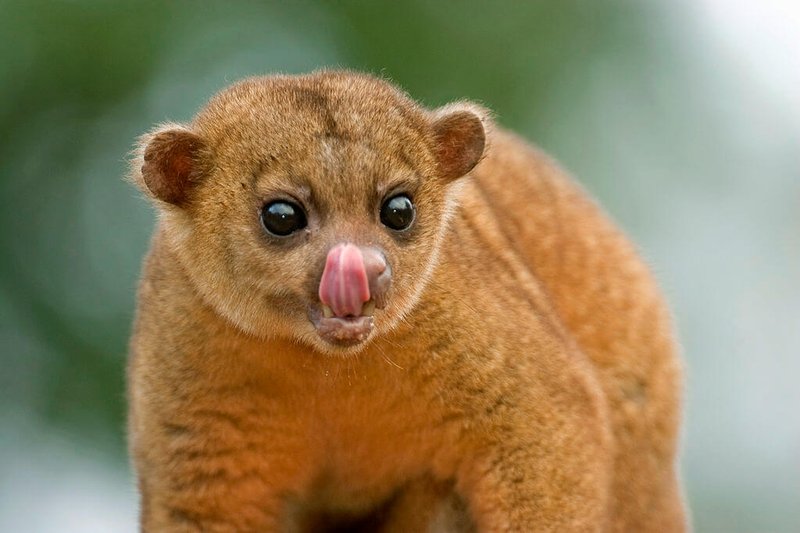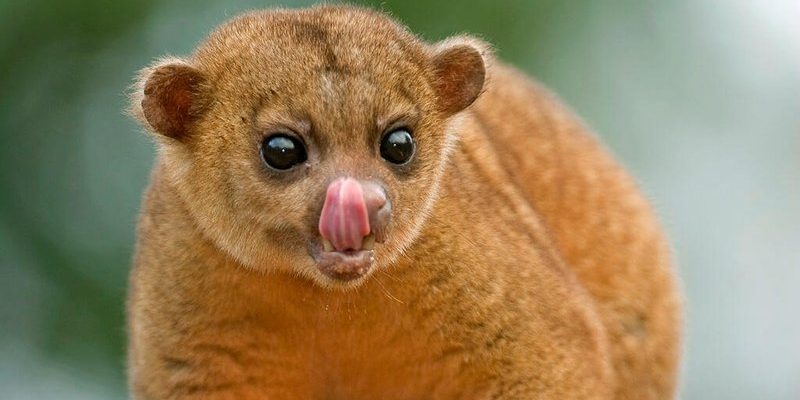
Imagine a bustling city. Each person has a job that keeps the community running smoothly, right? Well, kinkajous do the same in their environment. From pollinating flowers to spreading seeds, they contribute significantly to the health of the rainforest. So, let’s explore how these fascinating animals fit into their ecosystem and why their presence matters more than you might think.
What is a Kinkajou?
Kinkajous, sometimes affectionately called “honey bears,” belong to the family Procyonidae, which makes them relatives of raccoons. These nocturnal mammals are native to Central and South America and are known for their playful behavior and social structure. They have long, prehensile tails that help them balance as they navigate the treetops with agility.
One of the coolest things about kinkajous is their diet. They primarily feast on fruit, nectar, and honey, but they are also opportunistic eaters and will munch on insects or small animals when the opportunity arises. This varied diet not only keeps them healthy but also ties them closely to the health of their ecosystem.
The Kinkajou as a Pollinator
You might not think of kinkajous as pollinators, but they actually play a crucial role in this process. As they visit various flowering plants to sip nectar, their furry bodies pick up pollen and transfer it from one bloom to another. This helps plants reproduce, which is essential for maintaining the biodiversity of the rainforest.
Imagine a garden filled with vibrant flowers. Each plant relies on bees or other creatures to pollinate it, ensuring that flowers can bloom again. Kinkajous do the same with many tropical plants, especially those that thrive in high canopies. Here’s a fun fact: they love fruits like figs and have a preference for certain flowering trees, making them selective pollinators.
Seed Dispersal and Plant Growth
Kinkajous are also fantastic seed dispersers. When they munch on fruits, they often swallow the seeds whole. Later, when nature calls, they excrete the seeds in different locations. This helps plants grow in new areas, promoting forest diversity and allowing various species to thrive.
Think about it: without kinkajous and other animals that aid in seed dispersal, many plants might struggle to spread across the forest floor. They depend on these small mammals to help them reach new heights—literally!
Kinkajous and the Food Web
Every ecosystem operates like a big web, where each thread represents a different species and its role. Kinkajous occupy a unique spot within this web. As both prey and predator, they balance the ecosystem. Predators like snakes and birds of prey hunt kinkajous, while kinkajous help control the insect population by consuming them.
This balance prevents any one species from dominating the ecosystem. When all parts of the web are working together, the forest can thrive, providing habitats for countless other species. It’s like a finely tuned orchestra where every instrument contributes to the harmony.
The Impact of Habitat Loss
Unfortunately, kinkajous face challenges today due to habitat loss and deforestation. As rainforests are cut down for agriculture and urban development, the homes of kinkajous shrink. Without adequate habitats, their population declines, leading to less pollination and seed dispersal.
This is a domino effect. Fewer kinkajous mean fewer plants pollinated and fewer seeds dispersed, which in turn negatively impacts the entire ecosystem they inhabit. The health of our planet is truly interconnected, and the plight of one species can ripple through many others.
Conservation Efforts for Kinkajous
Fortunately, there are various conservation efforts aimed at protecting kinkajous and their habitats. Organizations focus on reforestation and creating protected areas to preserve these beautiful forests. Initiatives that promote sustainable agriculture can also help minimize forest destruction while allowing local communities to thrive.
You might be wondering what you can do to help. Supporting sustainable products, participating in local conservation programs, or simply spreading awareness can make a difference. Every little effort counts when it comes to protecting the environment.
The Kinkajou’s Unique Adaptations
Kinkajous have several remarkable adaptations that help them survive and thrive in the wild. Their large eyes allow them to see well in the darkness of the forest, and their strong sense of smell helps them find food. Plus, their agile bodies and prehensile tails give them an advantage in navigating the complex canopy.
These adaptations are not just quirks; they’re vital for their survival. The forest is a bustling place, and kinkajous need every edge they can get to find food and avoid predators. Each unique feature is finely tuned for their life in the trees.
Kinkajous may seem small and unassuming, but their role in the ecosystem is anything but minor. From pollinating flowers and dispersing seeds to maintaining balance in the food web, they contribute significantly to the health of their rainforest homes.
As we continue to face environmental challenges, understanding and protecting kinkajous is crucial. Not only do they embody the beauty of biodiversity, but they also remind us of the intricate connections that bind all living things together. So next time you hear about kinkajous, remember they aren’t just adorable animals; they are essential threads in the rich tapestry of life in the rainforest.

